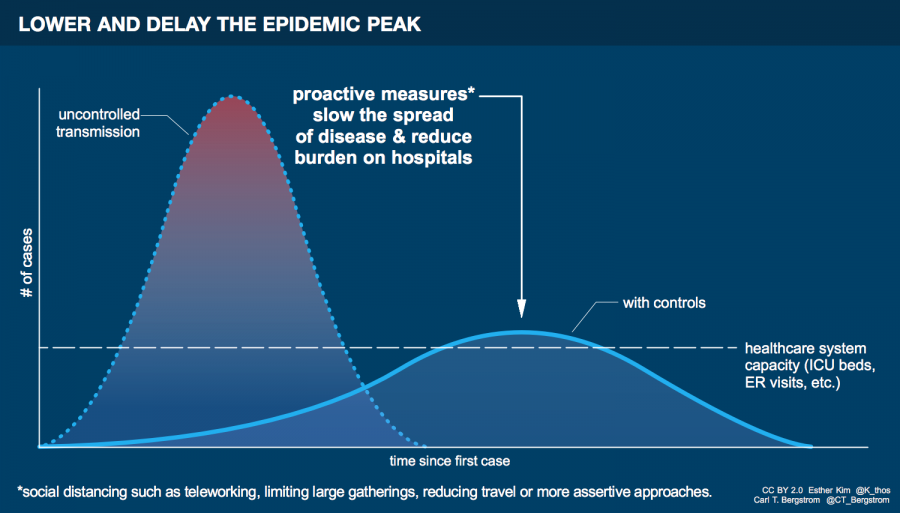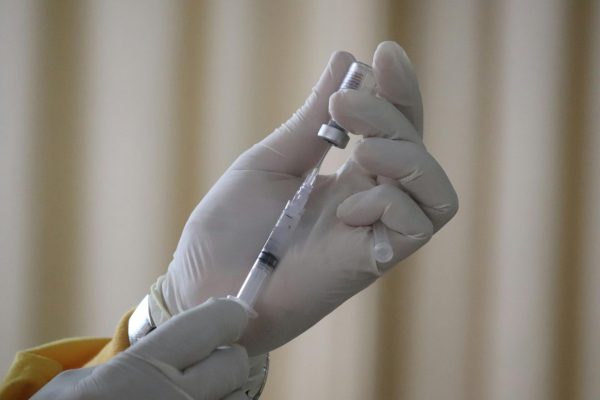An Analysis of Coronavirus Vocabulary
April 13, 2020
In this strange age of COVID-19, a new vocabulary must follow. Here is a short description of some of these words that are becoming more common:
Social Distancing:
These include a range of public health measures put in place to prevent the further spread of the Coronavirus. Cancelling events that involve large gatherings, shutting down schools and offices, and restricting restaurants to operating on a take out only policy are all examples of social distancing. However, these guidelines do not prohibit all forms of social interaction. It is important to try to stay in contact with your friends and loved ones through the phone, video chat, or other means of communication – as long as it is at least six feet apart.
Flatten the Curve:
The curve refers to the path the virus is likely to take in terms of spreading. The first curve depicts an early onset, rapidly approaching peak in cases. This is very dangerous as it threatens to overwhelm healthcare systems across the country as they struggle to deal with more and more new cases. However, this can be avoided with early population wide measures such as social distancing. The second curve depicts this more optimal scenario which is a delayed, less severe and more manageable peak.
Quarantine:
Individuals who have been exposed to the Coronavirus, but themselves are not yet sick are separated. Potentially infected individuals are set aside from the public until it is clear that they cannot spread the infection.
Isolation:
This is slightly different from quarantine as the separated individual is already sick. They must continue to remain separated until they can no longer infect others.
Dr. Anthony Fauci:
He has served as the direction of the National Institute of Allergy and Infectious Diseases for 36 years and has now become a household name. A familiar face at the daily White House Coronavirus Press Briefings, many view Dr. Fauci as a voice of scientific reassurance in this time of uncertainty. Many also commend him for his non partisan participation during the crisis.
Ventilator:
In a patient with severe respiratory problems, a ventilator supplies oxygen. A tube is placed down a patient’s throat to open up the airways. Many fear possible ventilator shortages as the virus progresses in hospitals, risking further loss of life. It is important to practice social distancing procedures to make sure hospitals have enough resources.
Drive Thru Testing:
Health care facilities, including Stony Brook Hospital, are now running tests in makeshift areas, such as parking lots. These aim to test large volumes of people with symptoms while reducing exposure by rolling down the car window and swabbing the suspected person’s throat. An appointment is necessary to get a test and results come back in several days.
Stimulus Bill:
In an effort to aid the ailing economy, the U.S. government is providing stimulus checks to Americans, funding for loans and small businesses, and support for health care centers. Read more about the CARES Act from one of our writers here.
Zoom:
With schools all over the nation shutting down, many have switched to online learning to keep students engaged. Zoom, an online video chat platform is gaining popularity among schools that have shut down. Other schools, such as our Ward Melville High School, is using Google Classroom as its main education replacement.
This Too Will Pass:
The most important four words to remember through this pandemic. Stay strong and stay positive.












